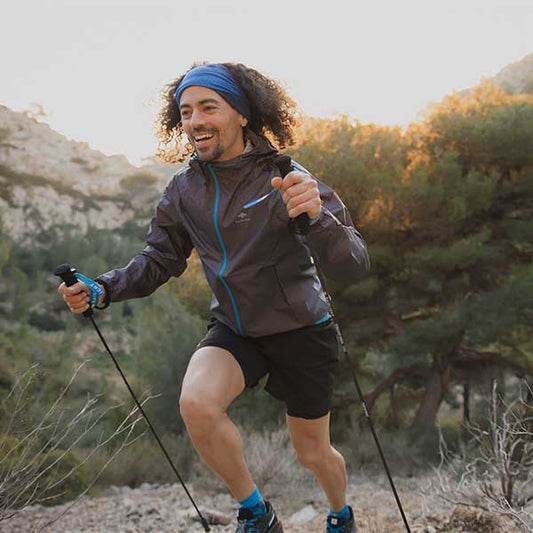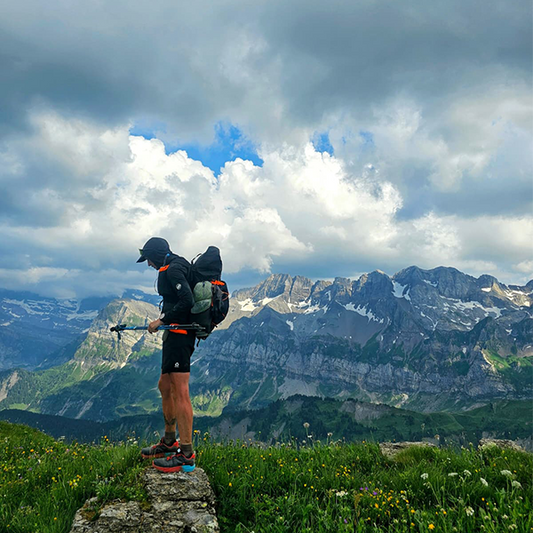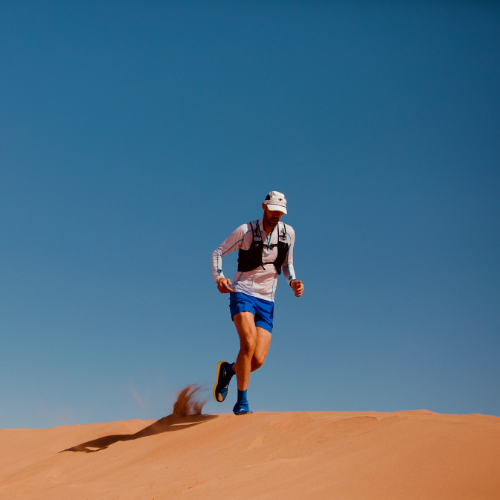The Asics SaintéLyon® is a trail myth, as much for its age (70th edition this year) as for its atypical profile.
Once again this year, many of you will be taking part in the famous headlamp sweep through the cold night that links the cities of Saint Etienne and Lyon.
To enjoy the festival to the full, you need to be properly trained and have a nutrition plan adapted to the distance but also to the chilly conditions.
Here's my advice on how to make the most of this anniversary edition of one of France's oldest races.
Marie is a Raidlight ambassador and passionate about sports nutrition, a field in which she has a degree. She works as an advisor in the Raidlight boutique, where she enthusiastically shares her expertise in equipment for outdoor activities. An avid trail runner and road racer, Marie finds her balance between enjoying outdoor activities and striving for performance.

The SaintéLyon® is a trail myth, as much for its age (70th edition this year) as for its atypical profile.
Once again this year, many of you will be taking part in the famous headlamp sweep through the cold night that links the cities of Saint-Etienne and Lyon.
To fully enjoy the festivities, you need to be properly trained and have a nutrition plan adapted to the distance but also to the chilly conditions.
Here's my advice on how to make the most of this anniversary edition of one of France's oldest races.
The average time to cover the 82 km and 2273 m of ascent is 10 hours. Before drawing up your nutrition plan, you need to take into account your race forecasts, so if you're planning to run in eight hours, you'll need to commit more energy per hour than if you're aiming for a dozen hours of effort.
We'll use the median time of ten hours to establish a basic plan of 50g of carbohydrates per hour, which you're free to adapt according to your digestive tolerance and your ambitions for the race!

Tip: running in cold weather conditions requires the body to commit energy to warming you up, so it's wise to set off well-covered to save a few precious calories! Cover your head and hands, wear warm socks and a good technical first layer like our seamless long-sleeve t-shirt. Don't hesitate to use self-adhesive heaters inside your clothing, possibly on your stomach to avoid digestive cramps due to cold-induced vasoconstriction.
When temperatures are low, it's easy to forget to drink. Remember that dehydration will lead to a drop in performance, so there's no need to force yourself to drink liters of water, but make sure you don't drink less than 500 ml of water per hour, and above all use an isotonic drink rich in carbohydrates and electrolytes, which will rehydrate you more than pure water (bearing in mind that one gram of glycogen retains 3 grams of water, a constant carbohydrate intake will prevent dehydration).
I've based this plan on products from our partner MX3, but it's up to you to adapt it using other nutritional products with equivalent calorie and, above all, carbohydrate intake.
For this refueling plan, we'll be using 6 MX3 XXL 70g gels containing 50g of carbohydrates, to be taken in two doses, giving 25g of carbohydrates per dose. These gels also contain caffeine, which is an invaluable aid to staying focused.

The last important point to address is the pre-race meal.
With the first race starts at 10:30 p.m., you'll need to find an evening meal that's easy to digest and will give you the energy you need to face the night outside. My advice is to keep things as simple as possible: a source of carbohydrates that you digest well, such as white rice or sweet potatoes, a source of protein such as a chicken fillet or two eggs, and a few vegetables. Personally, when I prepare a pre-race meal for several people, it's always the winning combo of rice/chicken/zucchini/pesto.
There's no need to eat a larger portion than usual, as you risk overloading your digestive system, but remember to add plenty of salt! Eat this meal 3 to 4 hours before the start, and don't hesitate to have a snack 45 minutes before the start, such as a banana or compote.
The SaintéLyon® is a unique adventure: surpass yourself, benefit from the energy of other runners, and make every kilometer an unforgettable moment!











1 comment
Merci pour ce complément d’informations importantes